Stan Garfield's Blog, page 7
November 22, 2024
Only You Can Prevent Knowledge Loss: How to Practice “Knowledge Archaeology”

In this post, I address the different kinds of lost knowledge — content that was once available online, but no longer appears to be accessible.
I identify the causes and provide examples of each. I describe my approach to recovering lost knowledge, coining the term “Knowledge Archaeology.” In addition, I describe ways to keep valuable knowledge accessible.
David DeLong wrote the book Lost Knowledge specifically about the threat of an aging workforce, which is one important example of knowledge loss. I included an infographic about how to deal with this challenge in my last book for Lucidea:
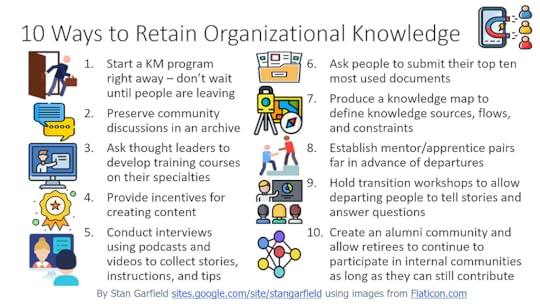
In my latest book for Lucidea, Profiles in Knowledge: 120 Thought Leaders in Knowledge Management, I curated content from each of the featured 60 women and 60 men. Each profile originally appeared as a separate blog post, which I periodically review to check for links that no longer work. In doing so, I repeatedly encounter broken links to articles, presentations, and blog posts. Unfortunately, every year when I return to an old post, more links are broken.
What Causes Knowledge Loss?Content becomes unavailable through multiple causes. These include:
Retirement: A blogger retires and removes their content and/or their site.Departure: A content provider leaves an organization, and their content is removed from the organization’s site.Illness or death: An author, or their partner, becomes sick or dies, and as a result, a required payment for their site or blog platform is missed. This results in the deletion of their content by the site owner.Defunct platform: The provider of a site that hosted content goes out of business or ends the service, and the platform disappears, with or without warning.Content removed: The content owner or site owner removes content.Site repurposed: The focus of a site changes, either due to a change of focus by the content provider or due to a takeover of the site by a different owner.Site reorganized: The owner of a site decides to restructure or rename it, leading to a change in all URLs of the content on the site. No redirection of the old URLs to the new ones is provided.Hacking: A hostile takeover, either for ransom or malicious intent, results in the content being deleted, altered, or no longer accessible.Content corrupted: An article or blog post, while still accessible, is garbled or altered so that it is either useless or compromised. This is due to changes in the software that runs the platform, and while not with hostile intent, diminishes or eliminates the original content.Paywall: Content that was once freely available is placed behind a paywall and is only available to those who are willing to pay.How Knowledge is Lost: Real-World ExamplesRetirementWhen Verna Allee retired, she removed all of her online content, including the entire vernaallee.com site. I was able to retrieve her content using the Wayback Machine.
DepartureWhen I left HP in 2008, my blog posts on hp.com remained for some time. However, they were eventually removed. Using my original files, I updated and republished them to my blog site on Medium. Most of the original versions are also available in the Wayback Machine.
IllnessIn a Facebook post in September 2024, long-time blogger Lilia Efimova wrote:
“My blog, which used to be my professional presence online for many years, is lost.
At some point (my husband) took care of its hosting, together with all other family and business stuff. Backups were done online, at the hosting website. The remainder of hosting payments went unnoticed in his email for months (due to illness) and by the time I found out that my blog stopped working, the data was deleted without any chance to restore.”
Most of her blog posts are available in the Wayback Machine. However, for some posts for which the Wayback Machine made no snapshot, the content is lost forever.
Defunct platformsI posted content from my first two years of blogging to Line56.com and hp.com Communities, neither of which still exists. I had to restore all of my blog posts from these two platforms.
My personal website is on Google Sites. It started on Google Pages and was automatically migrated to the original version of Google Sites. I was forced to migrate it later to a new version of Google Sites, which was partially automated, but still required a lot of manual effort.
I used to post on Google+. When that platform shut down, all my content was lost.
Seeking alternatives to Twitter, I started using Post.news. It offered an automatic replication feature from Substack that I took advantage of, but not long after I started using it, the platform closed.
The SIKM Leaders Community started on Yahoo! Groups. When Yahoo! announced the end of life of the platform, I was able to migrate all existing content to Groups.io. Much of this was automated, but I had to manually insert updated links to files, attachments, and monthly call summaries. There was no such luck with the repository of recordings of the community’s monthly call on divShare. It suddenly disappeared without warning, and all recordings were lost. Some original copies had been kept and were made available again on Microsoft OneDrive, but not all.
Content removedEuan Semple changed his personal site, and for a long time, his older blog posts were unavailable. He recently restored them to his new site, but unfortunately none of the original URLs work.
Site repurposedGraham Durant-Law changed his site’s focus from knowledge management to bagpiping. All of his KM content was removed, but I was able to retrieve it from the Wayback Machine.
When the KM4Dev Community migrated its online discussions from dgroups.org to dgroups.io, the original site was taken over and renamed to KMTools. It was viewed as a hostile action.
Site reorganizedMatt Moore made a subtle change to the URL of his blog, removing the final “s” in EngineersWithoutFears to result in the new URL, EngineersWithoutFear. No content was lost, but there was no redirection of the old URL to the new one.
Dave Snowden’s company site was renamed from Cognitive-Edge.com to TheCynefin.co. All URLs were successfully redirected to prevent any disruption in access to the important content.
HackingThe ActKM Community was once a thriving KM community hosted in Australia but valued and participated in across the world. Hackers stole the domain and shut down the site, and all of the many valuable threaded discussions were lost.
Content corruptedOn several occasions, when editing an old LinkedIn article to update its content, I encounter totally unformatted text, with all links and images missing. Fortunately, I maintain a second copy of each article on Medium, so I am able to quickly recover. Without the backup, I would have to spend a great deal of time recreating the original version.
PaywallsSlideShare, once owned by LinkedIn (which in turn, was owned by Microsoft), was sold to Scribd. They added annoying ads and required paid membership to download presentations. For sharing the presentations of the monthly SIKM Leaders Community calls, I switched to Microsoft OneDrive.
How to Locate Missing Information OnlineWhen I encounter a broken link, or when I am searching for content that was available in the past but is no longer accessible, I use an approach I call “Knowledge Archaeology.” This is a regular and important part of my writing. Here is how I do it.
Search on Google. Enter the exact title of the content you are seeking. Look for copies of the content made by others. If none are found, look for pointers to the content you are seeking that have old links that no longer work. Then use those links in step 2.Plug URLs into the Wayback Machine. Use the last-known URL of the content or one found in step 1. If the Wayback Machine has one or more snapshots of that URL, it will display all the years in which the snapshots were taken. Choose a year that shows a vertical bar, and then look for the dates with blue circles and click on the time of a snapshot. You may need to review multiple snapshots from different years in order to find specific ones that contain the actual missing content.Follow the trail. If there is no snapshot of the exact URL in the Wayback Machine, try using just the first part of the URL, and asking the Wayback Machine to show all snapshots using that first part. Look for landing pages, a table of contents, or a blog calendar and look for links from there. Try different dates, zeroing in on when the page you are seeking first appeared. How to Keep Content Accessible
How to Keep Content AccessibleIf you blog or provide other content for public consumption, here are tips to ensure that your content remains available to your readers.
Use platforms that are likely to persist. Nothing is forever, but Google, LinkedIn, and Microsoft are likely to be around for a while.Keep your own copy of all published content. Save it into a document, and store that document in a cloud service such as Microsoft OneDrive where it will be accessible and regularly backed up.Post to at least two public platforms. On social media, I post twice: once on Twitter and once on LinkedIn. For blogs, I post a copy on Medium of each LinkedIn article, Lucidea post, and Quora answer.Don’t remove content. Just because it’s old doesn’t mean that it isn’t useful. On my Google Site, I maintain copies of everything I have written. I still refer to many of my old blog posts, articles, and presentations, and I know that others do as well.Don’t change URLs. If you must, then add redirects from the original URLs.Don’t require a login. I provide read access to all SIKM Leaders Community threaded discussions, unlike KM4Dev, which requires members to login to read discussions.Post on a site that you control: In Post on your own site, Harold Jarche wrote, “social media channels (controlled by someone else) come and go.”Use tools that provide access to all previous versions of content. In case you, or someone else with access, inadvertently deletes or alters content and you want or need to revert to a prior version, you will be able to do so. A wiki is an example of such a tool.Have co-owners for your site. If something happens to you, someone else will be able to continue managing your site.Use strong passwords. Don’t make it easy for hackers to disrupt or take control of your site.Automatic Archiving: Best Practice or Not?For internal content within an enterprise, here is an additional piece of advice: don’t automatically archive content.
Knowledge repositories often are configured to automatically archive documents after some predetermined period of time. The intent is that after content has been available for 90 days (or whatever duration is chosen) it is no longer current, and thus should be removed from the repository. The assumption is that this old content should not appear in search results or in lists of available documents. Reasons for this include:
Old documents are no longer relevant, accurate, or useful.Searches yield too many results, so weeding out old documents will improve user satisfaction with search.Content contributors should refresh documents periodically.Contributed content does not automatically become obsolete after a fixed period of time. It may remain valuable indefinitely. I offer the analogy that just because Peter Drucker died in 2005, we don’t remove his books from the library. His insights will continue to be useful for a very long time.
One firm where I worked had an automatic archiving process. As a result, I would often receive messages from frustrated users who were searching for content that they had previously found in the repository but could no longer find. I would have to restore this content from the archive to the active repository. This caused users to be annoyed with the KM program, resulted in a lot of wasted time and effort, and sometimes delayed the retrieval of important information needed for client work.
With the cost of mass storage steadily decreasing, there are few good reasons to remove content from knowledge repositories unless it is known to be outdated, incorrect, or useless. Instead, ensure that the search engine can limit results by the date of the knowledge object. Defaults can be set to limit results to the last 90 days, one year, or whatever duration is desired. It should be easy for users to change the date range to include older content in the search results.
If this is not possible, then you will need to actively curate internal content that has been archived due to automatic archiving processes but is still in demand. To do so, retrieve it from the archives, restore it to internal repositories, and modify the expiration date so that it will not be archived again.
Using Knowledge Archaeology to Prevent Knowledge LossThere is no end to the continuing loss of resources that used to be available and would still be useful. To address this, I use “knowledge archaeology” to find and restore the missing content. I hope the techniques outlined here will be useful to you in your own pursuit of knowledge.
[image error]November 19, 2024
Profiles in Knowledge: 120 Thought Leaders in Knowledge Management

This is my sixth book as sole author, and the fourth published by Lucidea Press. By reading it, you can explore curated insights from 120 top knowledge management leaders across 20 key categories. Each profile includes essential quotes, books, and contributions — offering valuable KM frameworks and principles.
LinksAll Thought LeadersAll Blog PostsBook Announcement: Ready to Read Download the free eBook Learn from Leading Thinkers in Knowledge ManagementProfiles in Knowledge: 120 Thought Leaders in Knowledge Management offers my curated selection of writing and thinking from KM practitioners in 20 specialty areas. My goals for the book include exposing KM practitioners to a wide range of important thinking, encouraging reading of the featured books, bringing back to life useful articles and presentations no longer available online by retrieving them from the Internet Archive, helping preserve the history of the field of knowledge management by curating the work of its prominent authors and speakers, and recognizing equally the work of women and men who have contributed so much to the profession.
I curated profiles of thought leaders in 20 KM specialties:
Analytics and Business IntelligenceArtificial IntelligenceBig PictureCollaborationCommunitiesConversationThe FutureInnovationIntellectual CapitalISO StandardKnowledge Transfer and RetentionLearningNetworksPersonal Knowledge ManagementSearch and FindabilitySense-MakingStory and NarrativeStrategyTaxonomyTechnologyTable of Contents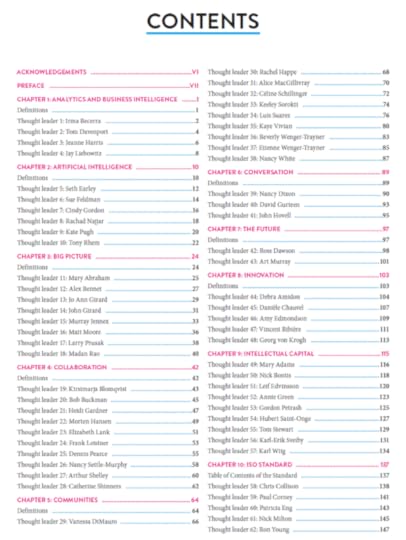
 Dedication
DedicationI dedicate this book to the dozen thought leaders included here who are no longer with us: Debra Amidon, Max Boisot, Jay Cross, Brenda Dervin, Sue Feldman, Carl Frappaolo, David Garvin, Bill Ives, Frank Leistner, Gordon Petrash, Melissie Rumizen, and especially, Larry Prusak.
Larry was much beloved by those who met him, collaborated with him, and learned from him. His passing in 2023 was a great loss to the field of knowledge management, but his wisdom and our fond memories of him live on. He had one of the great minds in the field, providing useful insights based on his extensive reading, keen observations, and deep thinking.
Larry posted the following on LinkedIn: “Stan, why not publish all your wonderful profiles in a book? I would be happy to help you with it when you are ready.” He was a mentor and friend to me and to many others, and he is missed.
 Preface
PrefaceThis book is about leading thinkers in the field of knowledge management, grouped into 20 categories. There is a description with definitions for each category and profiles for 120 thought leaders, including quotes from each, books and other important content, and key insights, frameworks, models, and principles.
2024 is the 30th anniversary of several important milestones in the history of knowledge management as a profession. To commemorate this anniversary, I chose 120 knowledge management thought leaders — one for each of the four seasons of every year. I want to highlight contributions made to the KM field by 60 women and 60 men from the ongoing Lucidea’s Lens: Knowledge Management Thought Leaders series.
My hope for this book is that by sharing the writing and thinking of these accomplished authors and speakers, I am enabling others in the field to benefit from their expertise. I want KM practitioners to apply the insights they gain by reading the work of these thought leaders, which I have carefully curated.
My goals for this book are:
Expose KM practitioners to a wide range of important thinking.Encourage reading of the featured books.Bring back to life useful articles and presentations no longer available online by retrieving them from the Internet Archive.Help preserve the history of the field of knowledge management by curating the work of its prominent authors and speakers.Recognize equally and promote the work of women and men who have contributed so much to our profession.PresentationsPart 1: Analytics, AI, Search, Taxonomy, Technologyhttps://medium.com/media/b2afe55a74e6995969d4df3def978110/hrefPart 2: Big Picture, The Future, Intellectual Capital, ISO Standard, Strategyhttps://medium.com/media/0efcb9f1683af8d78d8a608457f3a901/hrefPart 3: Collaboration, Communities, Conversation, Knowledge Transfer & Retention, Networkshttps://medium.com/media/758b264ccd210bc1b101d6b9864dfc16/hrefPart 4: Innovation, Learning, Personal Knowledge Management, Sense-Making, Story & Narrativehttps://medium.com/media/cffce6693aac5158b6b132894f21d792/href[image error]November 15, 2024
Ready to Read: Profiles in Knowledge: 120 Thought Leaders in Knowledge Management

I am pleased to announce that my new book, Profiles in Knowledge: 120 Thought Leaders in Knowledge Management, is now available from Lucidea Press.
The book is a compilation of the writing and thinking of leading practitioners in the field of knowledge management, grouped into 20 categories. There is a description with definitions for each category and profiles for 120 KM thought leaders, including quotes from each, books and other important content, and key insights, frameworks, models, and principles.
The book’s categories and chapters are:
Analytics and Business IntelligenceArtificial IntelligenceBig PictureCollaborationCommunitiesConversationThe FutureInnovationIntellectual CapitalISO StandardKnowledge Transfer and RetentionLearningNetworksPersonal Knowledge ManagementSearch and FindabilitySense-MakingStory and NarrativeStrategyTaxonomyTechnologyMy goals for the book include exposing KM practitioners to a wide range of important thinking, helping preserve the history of the field of knowledge management by curating the work of its prominent authors and speakers, and recognizing equally the work of women and men who have contributed so much to the profession.
I am delighted that Lucidea is offering a free eBook version, which you can download here.
[image error]November 12, 2024
Hazel Hall: Profiles in Knowledge
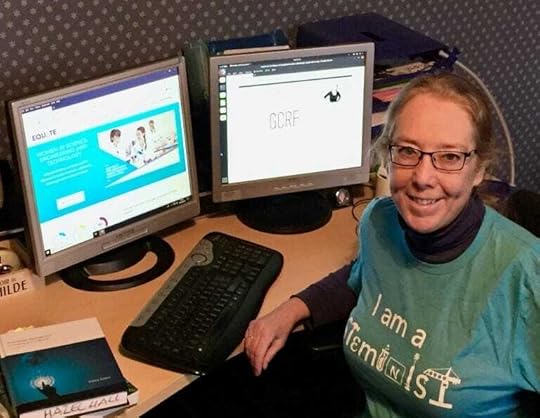
This is the 109th article in the Profiles in Knowledge series featuring thought leaders in knowledge management. Hazel Hall is an Emeritus Professor in the School of Computing, Engineering, and the Built Environment (SCEBE) at Edinburgh Napier University UK, and Docent of Information Studies in the School of Business and Economics at Åbo Akademi, Finland. She is a Fellow of the Royal Society of Edinburgh.
Her main research expertise and teaching interests are in information sharing in online environments within the context of knowledge management. Other interests include information behavior and use, online communities and collaboration, library and information science research, and research impact.
Hazel served on the editorial boards of the Journal of Information Science, Library and Information Science Research, and Aslib Journal of Information Management. She have won a number of awards for research and teaching. These include the 2019 Clarivate Analytics Outstanding Information Science Teacher Award, the SICSA PhD Supervisor of the Year Silver Award 2017, and the 2016 Jason Farradane Award. Her work leading the implementation of the UK Library and Information Science Research Coalition completed between 2009 and 2012 was recognized by the award of IWR Information Professional of the Year 2009, and the 2011 SLA Europe Information Professional award.
Hazel earned a PhD at the (then) School of Computing at Edinburgh Napier (her doctoral thesis considered the role of intranets in knowledge sharing) and a Master’s degree in Library and Information Studies. She studied French and Italian language and literature as an undergraduate at the Universities of Birmingham, Nantes and Paris Sorbonne.
Background EducationUniversity of Birmingham — BA (Spec Hons), French, 1982–1986Edinburgh Napier University — PhD, Computing, 1999–2004Birmingham City University — MA, Library and Information Studies, 1992–1993ExperienceEdinburgh Napier University — Emeritus Professor, 2022 — PresentÅbo Akademi University — Docent in Information Studies, 2017 — PresentEdinburgh Napier University — Professor of Social Informatics, 2010–2022Reader in Social Informatics, 2007–2010Senior Lecturer, 2000–2007Lecturer, 1999–2000Queen Margaret University College — Lecturer, 1989–1999ProfilesLinkedInAboutCVabout.meAcademiaNetWikipediaTwitterFacebookEdinburgh Napier UniversityContentBlogKnowledge ManagementKMAthena SWAN bronze: the Edinburgh Napier experienceLinkedIn PostsConference presentations and postersResearch reportsPhD thesis — The knowledge trap: an intranet implementation in a corporate environmentReviews and previewsApostrophes — its and it’s
EducationUniversity of Birmingham — BA (Spec Hons), French, 1982–1986Edinburgh Napier University — PhD, Computing, 1999–2004Birmingham City University — MA, Library and Information Studies, 1992–1993ExperienceEdinburgh Napier University — Emeritus Professor, 2022 — PresentÅbo Akademi University — Docent in Information Studies, 2017 — PresentEdinburgh Napier University — Professor of Social Informatics, 2010–2022Reader in Social Informatics, 2007–2010Senior Lecturer, 2000–2007Lecturer, 1999–2000Queen Margaret University College — Lecturer, 1989–1999ProfilesLinkedInAboutCVabout.meAcademiaNetWikipediaTwitterFacebookEdinburgh Napier UniversityContentBlogKnowledge ManagementKMAthena SWAN bronze: the Edinburgh Napier experienceLinkedIn PostsConference presentations and postersResearch reportsPhD thesis — The knowledge trap: an intranet implementation in a corporate environmentReviews and previewsApostrophes — its and it’sThis is what you need to remember:
Possessive adjectives do not use apostrophes.Apostrophes are used in words to denote missing letters.ArticlesGoogle ScholarResearchGateSemantic ScholardblpKudosLoopORCIDScopusWeb of ScienceJournal articles, books and conference papersMilosheva, M., Robertson, P., Cruickshank, P. & Hall, H. (2021). The role of information in career development. Journal of the Institute for Career Education and Counselling2, 47(1), 12–20. [Full text available from publisher with subscription access; full text available from the Edinburgh Napier repository.]Ryan, F., Cruickshank, P., Hall, H., & Lawson, A. (2020). Blurred reputations: Managing professional and private information online. Journal of Librarianship and Information Science, 52(1), 16–26. [Full text available from publisher with subscription access; full text available from the Edinburgh Napier repository.]Buunk, I., Smith, C.F. & Hall, H. (2019). Tacit knowledge sharing in online environments: locating ‘Ba’ within a platform for public sector professionals. Journal of Librarianship and Information Science, 51(4), 1134–1145. [Full text available from publisher with subscription access; full text available from the Edinburgh Napier repository.]Ryan, F., Hall, H., Cruickshank, P. & Lawson, A. (2019). Build, manage and evaluate: information practices and personal reputations on social media platforms. Information Research 24(4). [Full text available from journal web site; full text available from the Edinburgh Napier repository.]Middleton, L., Hall, H., & Raeside, R. (2019). Applications and applicability of Social Cognitive Theory in Information Science research. Journal of Librarianship and Information Science 51(4), 927–937. [Full text available from the publisher with subscription access; full text available from the Edinburgh Napier repository.]Middleton, L. Hall, H., Muir, L. & Raeside, R. (2019). The interaction between people, information and innovation: information literacy to underpin innovative work behaviour in a Finnish organisation. In: Proceedings of the 81st Annual Meeting of the Association for Information Science and Technology, 55(1) [Full text available from publisher with subscription access; full text available from the Edinburgh Napier repository.]Hall, H., Cruickshank, P. & Ryan, B. (2018). Long-term community development within a researcher network: a social network analysis of the DREaM project cadre. Journal of Documentation, 74(4), 844–861. [Full text available from publisher with subscription access; full text available from the Edinburgh Napier repository.]Ryan, F., Cruickshank, P., Hall, H. & Lawson, A. (2017). Building identity in online environments: an information science perspective. In: Proceedings of the 80th Annual Meeting of the Association for Information Science and Technology 54(1) (pp. 792–793). Oxford: Wiley. [Full text available from publisher with subscription access; full text available from the Edinburgh Napier repository.]Buunk, I., Hall, H. & Smith, C.F. (2017). Skills in sight: how social media affordances increase network awareness. In: Proceedings of the 18th European Conference on Knowledge Management (ECKM) 2017 (pp. 181–186). Reading: Academic Conferences Ltd. [Abstract available from the Edinburgh Napier repository.]Buunk, I., Hall, H., & Smith, C.F. (2017). Tacit knowledge sharing: the determination of a methodological approach to explore the intangible. Information Research, 22(1). [Full text available from publisher; full text available from the Edinburgh Napier repository.]Hall, H. & Raeside, R. (2016). Mapping the UK information workforce in the library, archives, records, information management, knowledge management and related professions. In: Proceedings of the 79th Annual Meeting of the Association for Information Science and Technology Annual Meeting, 53(1), 1–4. [Full text available from publisher; full text available from the Edinburgh Napier repository.]Ryan, F., Cruickshank, P., Hall, H., & Lawson, A. (2016). Managing and evaluating personal reputations on the basis of information shared on social media: a Generation X perspective. Information Research, 21(4). [Full text available from publisher; full text available from the Edinburgh Napier repository.]Ryan, F., Cruickshank, P., Hall, H., & Lawson, A. (2016). Personal online reputation: the development of an approach to investigate how personal reputation is evaluated and managed in online environments. In: Proceedings of the 2nd International Data Information and Information Management Conference (IDIMC). (pp. 98–108). Loughborough: LISU. [Full text available from publisher; full text available from the Edinburgh Napier repository.]Rasmussen, L. & Hall, H. (2016). The adoption process in Management Innovation: a Knowledge Management case study. Journal of Information Science, 42(3), 356–368. (DOI 10.1177/0165551515625032) [Published version available from publisher with subscription access; full text available from the Edinburgh Napier repository.]Jarman, D., Theodoraki, E., Hall, H., & Ali-Knight, J. (2014). Social network analysis and festival cities: an exploration of concepts, literature and methods. International Journal of Event and Festival Management 5(3), 311–322 [Full text available from publisher with subscription access; full text available from the Edinburgh Napier repository.]Auernhammer, J. & Hall, H. (2014). Organizational culture in knowledge creation, creativity and innovation: towards the Freiraum model. Journal of Information Science 40(2), 154–166. (DOI 10.1177/0165551513508356.) [Full text available from publisher with subscription access; full text available from the Edinburgh Napier repository.]Cooke, L. & Hall, H. (2013). Facets of DREaM: a Social Network Analysis exploring network development in the UK LIS research community. Journal of Documentation, 69(6), 786–806. (DOI: 10.1108/JD-09–2012–0124.) [Full text available from publisher with subscription access; full text available from the Edinburgh Napier repository.]Hall, H., Irving, C., & Cruickshank, P. (2012). Improving access to Library and Information Science research: maximizing its relevance and impact to practitioners. Business Information Review, 29(4), 224–230. (DOI 10.1177/0266382112470413.) [Full text available from publisher with subscription access; full text available from the Edinburgh Napier repository.]Hall, H. (2011). Relationship and role transformations in social media environments. The Electronic Library, 29 (4), 421–428. (DOI 10.1108/02640471111156704.) [Full text available from publisher with subscription access; full text available from the Edinburgh Napier repository; slides from the associated keynote conference presentation also available.]Lumsden, J., Hall, H. & Cruickshank, P. (2011). Ontology definition and construction, and epistemological adequacy for systems interoperability: a practitioner analysis. Journal of Information Science 37(3), 246–253. (DOI 10.1177/0165551511401804.) [Full text available from publisher with subscription access; full text available from the Edinburgh Napier repository.]Loudon, L. & Hall, H. (2010). From triviality to business tool: the case of Twitter in information services delivery. Business Information Review, 27(4), 236–241. (DOI 10.1177/0266382110390480.) [Full text available from publisher with subscription access; full text available from the Edinburgh Napier repository.]Hall, H., Widen, G. & Paterson, L. (2010). Not what you know, nor who you know, but who you know already: examining online information sharing behaviours through the lens of social exchange theory. Libri, 60(2), 117–128. (DOI 10.1515/libr.2010.011.) [Full text available from publisher with subscription access; full text available from the Edinburgh Napier repository.]Hall, H., & Widen-Wulff, G. (2008). Social exchange, social capital and information sharing in online environments: lessons from three case studies. Studia Humaniora Ouluensia, 8, 73–86. [Full text available from the Edinburgh Napier repository.]Hall, H. & Davison, B. (2007). Social software as support in hybrid learning environments: the value of the blog as a tool for reflective learning and peer support. Library and Information Science Research, 29(2), 163–187. (DOI 10.1016/j.lisr.2007.04.007.) [Full text available from publisher with subscription access; full text available from the Edinburgh Napier repository; slides from the associated conference presentation also available.]Hall, H. & Goody, M. (2007). KM culture and compromise — interventions to promote knowledge sharing supported by technology in corporate environments. Journal of Information Science, 33(2), 181–188. (DOI 0165551506070708.) [Full text available from publisher with subscription access; full text available from the Edinburgh Napier repository. The content of this article was developed from a conference presentation for which the full text and slides from the associated conference presentation are also available. This work is related to Hazel Hall’s PhD.]Hall, H. & Abell, A. (2006). Who is managing information? Opportunities in the e-information market place. In H. Jezzard (Ed.), Proceedings of the 30th International Online Meeting, London, November 28–30 2006 (pp. 39–44). London: VNU. [Full text available from the Edinburgh Napier repository.]Hall, H. & Abell, A. (2006). New role realities: avenues for extending the reach of information specialists. American Society of Information Science and Technology Annual Conference, November 3–8, Austin, Texas. [Full text available from publisher; full text available from the Edinburgh Napier repository; associated poster presentation available.]Beasley, N., Davison, B., & Hall, H. (2004). Using online discussion to support activities in online tutorials. In Remenyi, D. (Ed.), Proceedings of the 3rd European Conference on eLearning, Université de Paris Dauphine, Paris, France, November 25–26, 2004 (pp. 7–14). [Full text of accepted manuscript available from the Edinburgh Napier repository.]Hall, H. (2004). The intranet as actor: the role of the intranet in knowledge sharing. In Proceedings of the international workshop on understanding sociotechnical action, 3–4 June 2004, Edinburgh, Scotland, 109–111. [Full text available from the Edinburgh Napier repository; slides from associated conference presentation also available. This work is related to Hazel Hall’s PhD.]Hall, H., & Graham, D. (2004). Creation and recreation: motivating collaboration to generate knowledge capital in online communities. International Journal of Information Management, 24(3), 235–246. [Full text available from publisher with subscription access; full text available from the Edinburgh Napier repository; slides from associated conference presentation also available.]Hall, H. (2002). Exploring knowledge sharing in distributed organisations: report on research in progress. In Proceedings of KMSS 2002: the new scope of knowledge management in theory and in practice, 2–6 September, Nice, France. [Full text available from the Edinburgh Napier repository. This work is related to Hazel Hall’s PhD.]Hall, H. (2002). Sharing capability: the development of a framework to investigate knowledge sharing in distributed organizations. In Proceedings of the Third European Conference on Organizational Knowledge, Learning and Capabilities, 5–6 April, Athens, Greece (CD ROM). Athens: Alba. [Full text available from the Edinburgh Napier repository.]; slides from associated conference presentation also available. This work is related to Hazel Hall’s PhD.]Davenport E. & Hall, H. (2002). Organizational knowledge and communities of practice. In B. Cronin (Ed.). Annual Review of Information Science and Technology (Vol. 36, pp. 171–227). Medford NJ: Information Today. (DOI 10.1002/aris.1440360105.) [Full text available from the Edinburgh Napier repository.]Hall, H. (2001). Input-friendliness: motivating knowledge sharing across intranets. Journal of Information Science 27(3) 139–146 (DOI 10.1177/016555150102700303) [Full text available from publisher with subscription access. This paper was republished in December 2001 in the Proceedings of the 25th International Online Meeting with the kind permission Bowker (publisher of the Journal of Information Science); slides from the associated conference presentation also available. This work is related to Hazel Hall’s PhD.]Davenport, E. & Hall, H. (2001). New knowledge and micro-level online organization: ‘communities of practice’ as a development framework. In R. Sprague (Ed.), Proceedings of the 34th Annual Hawaii International Conference on System Sciences (CD ROM). Los Alamitos: IEEE. [Full text available from publisher with subscription access; full text available from the Edinburgh Napier repository.]Hall, H. (2000). Online information sources: tools of business intelligence? Journal of Information Science, 26(3), 137–141. [Full text available from publisher with subscription access.]Hall, H. (1999). Recreating community: a virtual case study. Education for Information, September, 253–258. [Full text available from publisher with subscription access.]Hall, H. (1998). Networked information: dealing with overload. In Proceedings of Information Scotland 1997, Strathclyde Business School, November 4th 1997 (pp. 37–44). Paisley: LACIG Scotland. [Full text available from the Edinburgh Napier repository.]eResource management in the electronic environment: company library Web pages and collection development principles with Aileen RussellResetting the compass for the business information landscape with Maria E. BurkeThe adoption process in Management Innovation: A Knowledge Management case study with Louise Rasmussen Sharing capability: the development of a framework to investigate knowledge sharing in distributed organizations
Sharing capability: the development of a framework to investigate knowledge sharing in distributed organizations

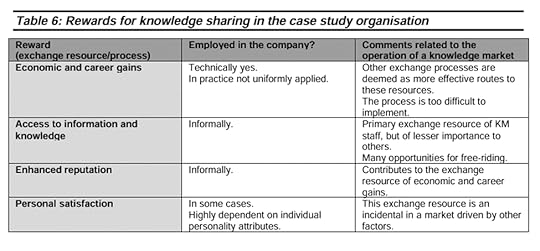 Articles by OthersNapier UniversityFor ASIST&T/Clarivate Analytics-award-winning teacher Hazel Hall, a close knit(ting) bond with studentsPresentationsSlideShareKnowledge Management seminar to the Institute of Chartered Accountants of Scotland
Articles by OthersNapier UniversityFor ASIST&T/Clarivate Analytics-award-winning teacher Hazel Hall, a close knit(ting) bond with studentsPresentationsSlideShareKnowledge Management seminar to the Institute of Chartered Accountants of ScotlandKnowledge Management seminar to the Institute of Chartered Accountants of Scotland
Input friendly intranetsThe intranet as actor: the role of the intranet in knowledge sharingThe intranet as actor: the role of the intranet in knowledge sharing
Devising intranet incentives: rewards and conditions for knowledge exchangeDevising intranet incentives: rewards and conditions for knowledge exchange
Social exchange for knowledge exchangeSocial exchange for knowledge exchange
Knowledge Management StrategyKnowledge Management and information systems: two case studiesFacilitating collaborationSocial computing tools for collaboration: perceptions of opportunity and riskSocial computing tools for collaboration: perceptions of opportunity and risk
Blogging, reflective learning and peer supportBlogging, reflective learning and peer support
Capital in communities: the case of the Cipher ChallengeCapital in communities: the case of the Cipher Challenge
Tacit knowledge sharing in online environmentsTacit knowledge sharing in online environments i buunk
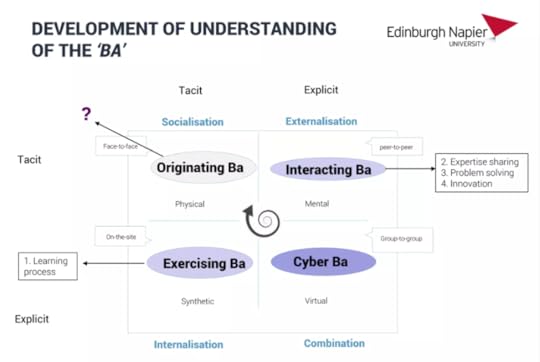 Getting real about social media
Getting real about social mediaGetting real about social media
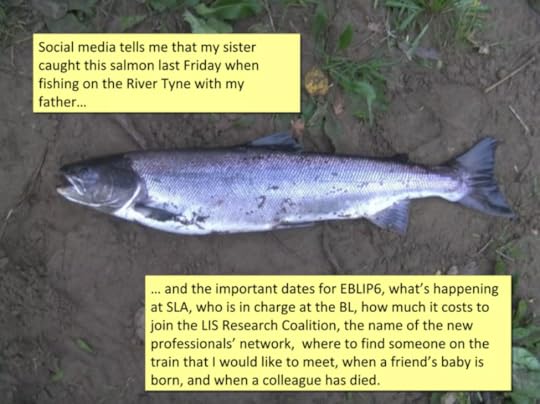
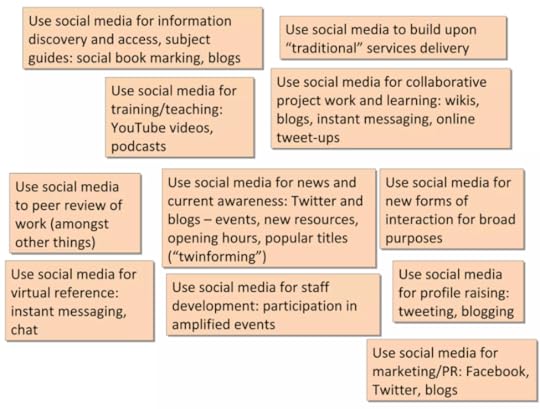
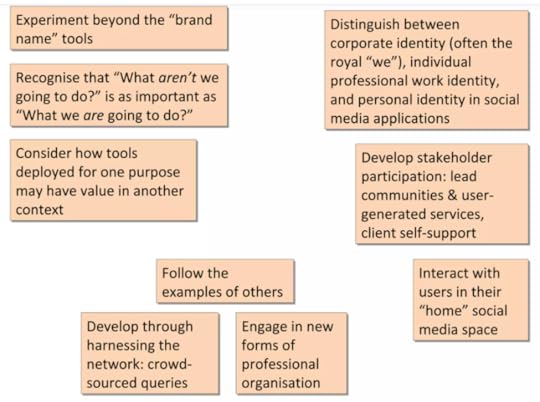 Collaboration and networking: learning from DREaM and RIVAL
Collaboration and networking: learning from DREaM and RIVALCollaboration and networking: learning from DREaM and RIVAL
 A Knowledge Management implementation as a management innovation: the impact of an agent of change
A Knowledge Management implementation as a management innovation: the impact of an agent of changeA Knowledge Management implementation as a management innovation: the impact of an agent of change
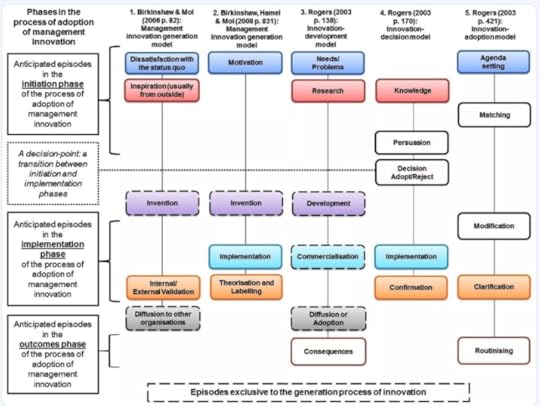 Skills in Sight: How Social Media Affordances Increase Network Awareness
Skills in Sight: How Social Media Affordances Increase Network AwarenessSkills in Sight: How Social Media Affordances Increase Network Awareness
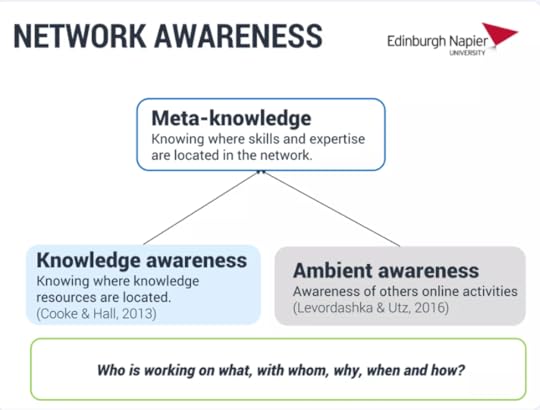 Knowledge management and knowledge sharing
Knowledge management and knowledge sharing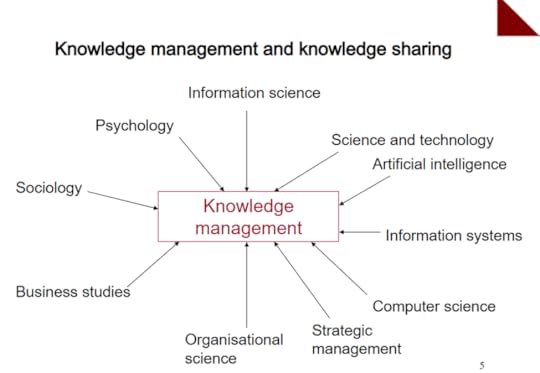 VideosMeeting the challenges of LIS researchhttps://medium.com/media/e621ec67f3daf09dd80af45d7cdbc1c5/hrefThe future of librarieshttps://medium.com/media/3e49767847340910156721e303002e45/hrefEquity & Diversity in Science: Lessons from Athena SWANhttps://medium.com/media/52dbbdc091a0a5610c7c8b6ca00ef80e/href3 phaseshttps://medium.com/media/a544bc687e2390bf26f576c8248733af/hrefBook Chapter
VideosMeeting the challenges of LIS researchhttps://medium.com/media/e621ec67f3daf09dd80af45d7cdbc1c5/hrefThe future of librarieshttps://medium.com/media/3e49767847340910156721e303002e45/hrefEquity & Diversity in Science: Lessons from Athena SWANhttps://medium.com/media/52dbbdc091a0a5610c7c8b6ca00ef80e/href3 phaseshttps://medium.com/media/a544bc687e2390bf26f576c8248733af/hrefBook Chapter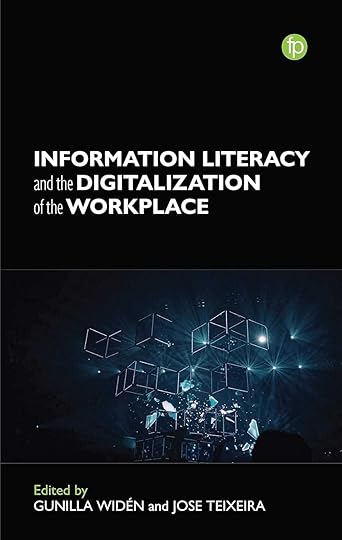 Information Literacy and the Digitalization of the Workplace edited by Gunilla Widen and José Teixeira — Chapter 6: Information literacy competencies for career transitions in the digital age with Pete Robertson, Marina Milosheva, and Peter CruickshankInformation literacy competencies for career transitions in the digital age: book chapter now publishedReview by Jennifer Winterburn[image error]
Information Literacy and the Digitalization of the Workplace edited by Gunilla Widen and José Teixeira — Chapter 6: Information literacy competencies for career transitions in the digital age with Pete Robertson, Marina Milosheva, and Peter CruickshankInformation literacy competencies for career transitions in the digital age: book chapter now publishedReview by Jennifer Winterburn[image error]
November 8, 2024
Knowledge Management Thought Leader 92: Jay Liebowitz

Jay Liebowitz is a professor, consultant, author, and editor. His research interests include knowledge management, data analytics, intelligent systems, intuition-based decision making, IT management, expert systems, and artificial intelligence. He has lectured and consulted worldwide.
Jay is Professor of Business Innovation and Industry Transformation at the Crummer Graduate School of Business at Rollins College. He was the first Knowledge Management Officer at NASA Goddard Space Flight Center and was the Founding Editor-in-Chief of Expert Systems with Applications: An International Journal.
He has published over 45 books and many journal articles. Jay is the Series Book Editor of the Data Analytics Applications book series published by Taylor & Francis.
Here are definitions for five of Jay’s specialties:
Analytics: Discovery and communication of meaningful patterns in data and textArtificial intelligence (AI): The capacity of a computer to perform operations analogous to learning and decision making in humans, as by an expert systemDecision Making: The process of making choices by identifying a decision that needs to be made, gathering information, and assessing alternative resolutions.Expert Systems: Computerized systems that emulate the decision-making ability of a human expert; designed to solve complex problems by reasoning about knowledge, represented mainly as if–then rules rather than through conventional procedural codeIntelligent Systems: Technologically advanced machines that perceive and respond to the world around them. They operate in an environment with other agents; possess cognitive abilities such as perception, action control, deliberative reasoning or language use; follow behavioral principles based on rationality and social norms; and have the capacity to adapt through learning.
For more about Jay, see Profiles in Knowledge. Jay created the following content. I have curated it to represent his contributions to the field.
Books by Jay Liebowitz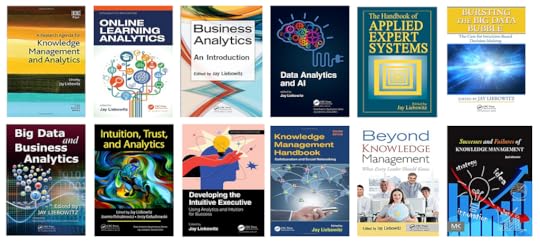 Key Ingredients to the Success of an Organization’s Knowledge Management Strategy
Key Ingredients to the Success of an Organization’s Knowledge Management StrategyEight-Stage Process for Knowledge Management
Stage 1: Identify — Determine core competencies, sourcing strategy, and knowledge domains.Stage 2: Capture — Formalize existing knowledge.Stage 3: Select — Assess knowledge relevance, value, and accuracy. Resolve conflicting knowledge.Stage 4: Store — Represent corporate memory in knowledge repositories with various knowledge schema.Stage 5: Share — Distribute knowledge automatically to users based on interest and work. Collaborate on knowledge work through virtual teams.Stage 6: Apply — Retrieve and use knowledge in making decisions, solving problems, automating or supporting work, job aids, and training.Stage 7: Create — Discover new knowledge through research, experimenting, and creative thinking.Stage 8: Sell — Develop and market new knowledge-based products and servicesIn order to implement such a knowledge management process, several important elements are needed:
A Knowledge Management Strategy with support from senior leadershipA Chief Knowledge Officer (CKO) or equivalent and a knowledge management infrastructure within the organizationKnowledge ontologies and knowledge repositories to serve as organizational/corporate memories in core competenciesKnowledge management systems and knowledge management toolsIncentives to motivate employees to share knowledgeA supportive culture for knowledge managementKnowledge Retention: What Practitioners Need to KnowFour key pillars underlying a knowledge retention (KR) strategy:
Bi-directional knowledge flow — having a top-down management push and bottom-up grass roots approach to gaining financial and moral support for KR activities;Convenient KR mechanisms — using both codification (systems-oriented collection approaches) and personalization (people-to-people connection approaches);Recognition and reward structure — incorporating ways to recognize and/or reward individuals for exhibiting knowledge sharing behaviors; andThe golden gem — bringing back retirees creatively in KR roles.KR process:
Assess the risk of losing critical knowledge and skills.Determine an approach to capture critical knowledge.Implement and evaluate actions for managing that risk (documentation, mentoring, training, re-engineering, sharing expertise).Knowledge retention approaches run the gamut from easy-to-use, low-cost approaches to more sophisticated, pricey techniques.A variety of KR approaches include the following:
A knowledge map, to be placed on the organization’s intranet for preservation and expansion purposes, can be a useful aid.Continuity books, as used in the military, or job hand-off aids, as used in companies like John Deere, can describe typical job duties, business processes, workflows, points of contacts, etc., to help someone quickly climb the learning curve.Deskside reviews can be used where someone learns by exchanging templates, cheat sheets and other job aids that may be in the desk drawers or on a hard drive, instead of on the organization’s shared drives.Mentoring programs, job shadowing, lunch and learn sessions, organizational narratives/storytelling, knowledge fairs, job rotation, wikis, blogs, expertise locator systems (yellow pages of expertise), videotaped interviews, online searchable multimedia asset management systems, lessons learned systems, do’s and don’ts tutorials (webcasted) and other KR approaches can be applied as appropriate.Essentially, knowledge retention and transfer should lead to organizational learning, which should be part of the fabric of the organization. Important aspects of the organizational learning formula are:
Develop “reflective practitioners.”Create incentives for encouraging learning.Stress learning at all levels — individual learning, team/group learning and inter-project learning; develop a lessons learned process and generic templates for target audiences).Knowledge Sharing Tenets for SuccessEnhance reward and recognition system to include learning and knowledge sharing competencies.Acquaint people with knowledge sharing and its benefits.Share the message that with creativity comes failure and we all benefit from talking about our successes and our failures.Integrate knowledge sharing into everyone’s job.Educate people about what types of knowledge are valuable and how they can be used.Make sure the technology works for people, not vice versa.[image error]November 1, 2024
Knowledge Management Thought Leader 91: Frank Leistner

The late Frank Leistner was the former Chief Knowledge Officer for SAS Global Professional Services, where he founded the knowledge management program and led a wide range of knowledge management initiatives up until 2012.
Frank worked with the IBM Institute for Knowledge Management and the Babson College Working Knowledge Center led by Tom Davenport and Larry Prusak. He participated in the Harvard Graduate School of Education Learning Innovation Laboratory (LILA) roundtable.
Frank was a member of the board of the Swiss Knowledge Management Forum (SKMF). He presented at numerous conferences and delivered keynotes in Europe and the United States about knowledge management, talent management, and social media topics.
Here are definitions for five of Frank’s specialties:
Collaboration: Interacting with peers and colleagues to exchange ideas, share experiences, work together on projects, and solve problems.Communities of Practice: Groups of people who share an interest, a specialty, a role, a concern, a set of problems, or a passion for a specific topic. Community members deepen their understanding by interacting on an ongoing basis, asking and answering questions, sharing their knowledge, reusing good ideas, and solving problems for one another.Enterprise Social Networks: Internal, private social networking platforms used for communications and collaboration within an organization.Knowledge Flow: How knowledge moves through organizations, including creation, identification, collection, review, sharing, access, and use.Social Media: Web- and mobile-based technologies used to turn communication into interactive dialogue among organizations, communities, and individuals.
For more about Frank, see Profiles in Knowledge. Frank created the following content. I have curated it to represent his contributions to the field.
Books by Frank LeistnerMastering Organizational Knowledge Flow: How to Make Knowledge Sharing Work
Because executive buy-in and leadership is a major success factor in driving organizational knowledge flows, it is also important that chief executive officers (CEOs) have the proper understanding as they get involved with strategies. After all, the CEOs are the ones who put the topic high on the future agendas of their organizations.
Knowledge management in the current understanding is often seen as a very technical, software-oriented area, and some people see it as relevant for high-tech organizations only, exclusively for those knowledge workers who spend most of their time online.
With the wider view I am taking, I claim that managing knowledge flows is something that can be applied and used in almost any type of organization. If you detach yourself from the idea that it is about storing “knowledge” in a database, you will see that it is applicable to you, even if you work in an environment that sees itself as being highly nontechnical. Some principles will even work for a group of physiotherapists sharing their experiences in various ways, such as in workshops, expert circles, and online forums.
…
If you want to take only one thing from this book, then let it be the fact that successful knowledge flow management needs a holistic approach and that working on the hard stuff (the people issues) will be your most important task. By holistic approach I mean an approach that covers all elements according to their final impact on success.
Many people still believe that technology is the biggest portion of that equation. But with many organizations considering that their KM initiatives have failed, it seems clear that the other two (people and process) probably did not get the attention they deserved.
What do I mean when I talk about focus on people? Especially within the area of knowledge flow management, it is essential that people are fully involved, motivated, and prepared to share high-potential information based on knowledge they built. Otherwise, any initiative that attempts to enable knowledge to flow through the organization will provide only a fraction of the potential value. And to take it to the extreme, every cent invested in technology could be a pure waste of money. Without proper real attention to the other components for success, you might as well invest the money into something more worthwhile. In fact, if you get presented with any proposal for a “KM” initiative that will spend 95 percent on technology and only 5 percent on (ongoing) costs for support functions (and this includes not only technical support, but marketing, training, strategy, etc.), you might as well take the 95 percent sum and donate it to a good cause of your choice.
Connecting Organizational Silos: Taking Knowledge Flow Management to the Next Level with Social Media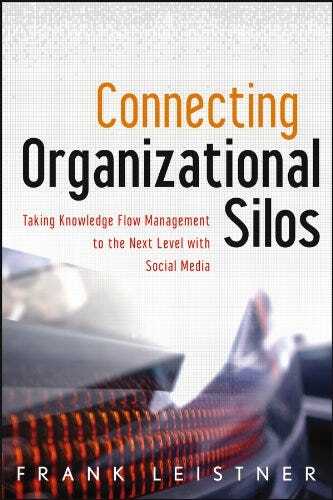
Chapter 1: Your Organization Is Not “The Web”
Humans are a social species, which means usually we like to interact. For most people, sharing knowledge within the right, trustworthy environment is a positive experience. My experience on the SAS Enterprise Social Network (ESN), The Hub, was based on stories from people I trusted who had successfully resolved the same problem I was tackling. Stories are an important element for knowledge flows, but in larger organizations, face-to-face interaction is not always possible, so the stories that transport knowledge in a small environment have to be shared differently in a large environment. That is a challenge that once seemed to indicate a key limitation of digital knowledge sharing, but the participative functions of Web 2.0 provided a whole range of ways for people to interact on a daily basis — not only between different sites in the same company, but also across organizations, between individuals, and across major cultural and geographic borders.
Let us look for a moment at how social media has led to flows of knowledge between individuals across the globe that do not know each other. Where did the trust that is necessary for these interactions come from? Part of it is that information exchanges are often very specific and fairly risk-free. For example, if I want to buy a book on the Internet and rely on recommendations from two or three strangers, I am not taking a big risk. Over time, and by basing judgment on a critical mass of input, trust rises so that those consumer reviews on Amazon are actually of value for my decision. The majority of people commenting on products, hotel rooms, or services intend to share something of value. They are also able to see the value of the collaborative contributions of the crowd unfold.
…
What role can a social media platform play in helping virtual teams? First of all, it can provide a general meeting place that anyone in an organization can usually get to very easily. So, just like anyone else, teams can agree to meet there to create groups (open or private ones) and organize themselves (around topics or projects). But teams usually do not operate in complete isolation either; they have other parties that they interact with to fulfill their tasks. An ESN provides some very good ways to enable this type of connection. The way that conversations are held on an ESN is usually a lot more visible, especially with the history of arguments and counterarguments. While this history does usually not go back for years, it does document recent discussions very well for all team members to see and learn from. As a result, learning and decision making are often faster with more participants — either those that are part of the team or others preliminary to the team.
From the SAS Global Professional Services Blog5 Keys to Building a Successful Enterprise Social NetworkDon’t start a social media effort with the goal to run it as a top management tool to inform your employees.Look at it as a long-term initiative not as a short-term project. Technology will only be one part of the solution.Get your most experienced social media experts (e.g., your bloggers) on board and get them to help you build momentum.Choose an open and passionate community manager that is likely to stick with the initiative longer-term.Create and manage a pulse through regular and ongoing activities. It will give your initiative the lifeline it will need to survive longer-term and provide a much higher return of investment.[image error]October 25, 2024
Knowledge Management Thought Leader 90: Patrick Lambe
 Patrick Lambe is Owner and Founding Partner of Straits Knowledge. He is a consultant and researcher in knowledge management and e-learning.
Patrick Lambe is Owner and Founding Partner of Straits Knowledge. He is a consultant and researcher in knowledge management and e-learning.Patrick has interest in the “soft systems” — how and why people and social groups use, consume, and produce knowledge. He specializes in knowledge audit, knowledge maps, expertise transfer, knowledge management strategy development, taxonomies, search, information architecture, and digital transformation.
Here are definitions for five of Patrick’s specialties:
Knowledge Audit: A formal determination and evaluation of how and where knowledge is used in business processes. Identifies implicit user needs and explicit information stores to evaluate all information resources and workflows and determine enterprise user access requirements. A rigorous process using questionnaires, interviews and resource descriptions.Knowledge Mapping: Presenting what knowledge resides where (e.g., people, media, organizational units, or sources of knowledge outside the organization) and demonstrating the patterns of knowledge flow.Knowledge Transfer: The process by which one or more people (the source) teach other people (the recipients) what the source knows so that the recipients are able to put that knowledge to effective use.Strategy: A set of guiding principles that, when communicated and adopted in an organization, generates a desired pattern of decision making. Strategy provides a clear roadmap that defines the actions people should take (and not take) and the things they should prioritize (and not prioritize) to achieve desired goals.Taxonomy: A particular classification arranged in a hierarchical structure that can be used to organize information so that it can be readily found through navigation, search, and links between related content.
For more about Patrick, see Profiles in Knowledge. Patrick created the following content. I have curated it to represent his contributions to the field.
Books by Patrick Lambe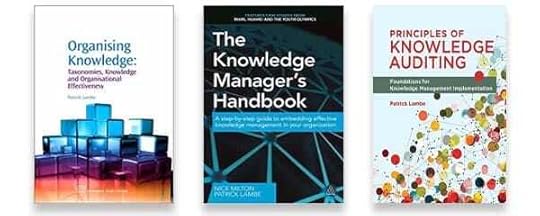 Selected KM Diagrams & Slides
Selected KM Diagrams & SlidesBelow is a selection of diagrams from several of Patrick’s presentations.
Topic: Knowledge Audits
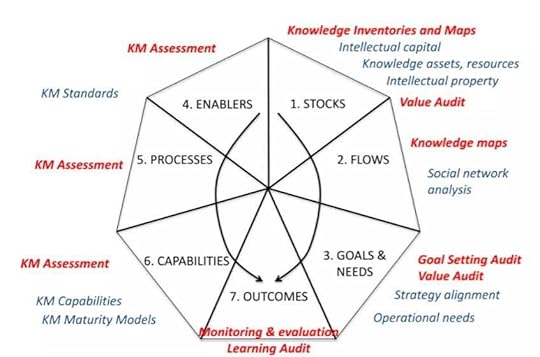 Topic: Knowledge Transfer
Topic: Knowledge Transfer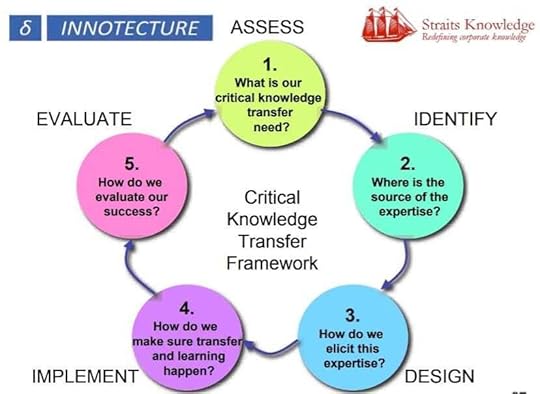
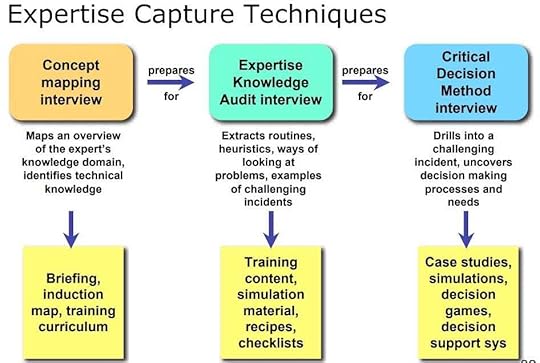 Topic: Taxonomy
Topic: Taxonomy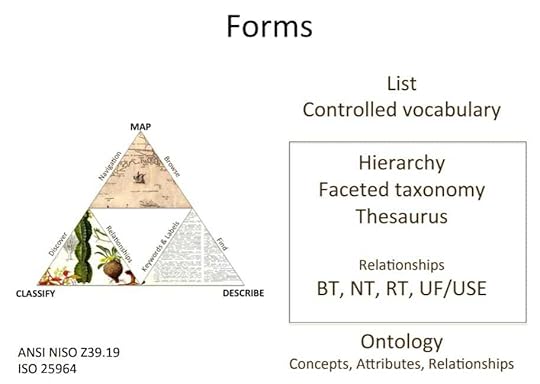 [image error]
[image error]
October 18, 2024
Knowledge Management Thought Leader 89: Valdis Krebs

Valdis Krebs is a management consultant and Founder and Chief Scientist at Orgnet LLC. He is the developer of InFlow, a software-based, organization network analysis methodology that maps and measures knowledge exchange, information flow, communities of practice, networks of alliances, and other networks within and between organizations. Through graphics and revealing measures, this technique allows managers to see what was once invisible.
As a data scientist, Valdis specializes in social, relational, and multimodal data analysis and visualization. As a network scientist, he applies artificial intelligence and social algorithms, data mining, organizational network analysis, and cluster analysis to business, community, and organizational projects. As a social scientist, he has over 20 years of organizational consulting and coaching experience, specializing in maps and metrics that reveal how an organization really works.
After living in Cleveland for many years, Valdis recently moved to Riga, Latvia. He intended to retire there, but his clients continue to keep him engaged.

For more about Valdis, see Profiles in Knowledge. You can also read the summary I wrote of his presentation at the 9th Midwest KM Symposium.
Valdis created the following content which I have curated to represent his contributions to the field.
BookValdis designed the network maps in Anda Rozukalne’s Latvia’s Media Owners.
 Social Network Analysis: An Introduction
Social Network Analysis: An IntroductionSocial network analysis [SNA] is the mapping and measuring of relationships and flows between people, groups, organizations, computers, URLs, and other connected information/knowledge entities. The nodes in the network are the people and groups while the links show relationships or flows between the nodes. SNA provides both a visual and a mathematical analysis of human relationships. Management consultants use this methodology with their business clients and call it Organizational Network Analysis [ONA]. ONA allows you to x-ray your organization and reveal the managerial nervous system that connects everything.
To understand networks and their participants, we evaluate the location and grouping of actors in the network. These measures give us insight into the various roles and groupings in a network — who are the connectors, mavens, leaders, bridges, isolates, where are the clusters and who is in them, who is in the core of the network, and who is on the periphery?
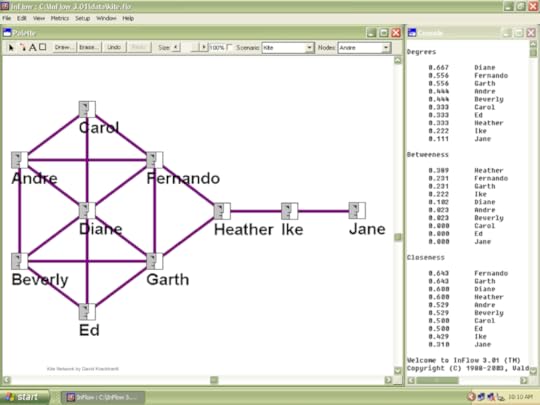
This network effectively shows the distinction between the three most popular individual centrality measures: Degree Centrality, Betweenness Centrality, and Closeness Centrality.
Employee Networks Reveal How Things Get Done in your Organization
The organizational map above shows the email flows amongst a large project team in a Fortune 100 company. It is an x-ray of how the project actually works! Each person on the team is represented by a node. Each node is colored according to the person’s department — red, blue, or green. Yellow nodes are consultants, contractors, and other external specialists hired to work on this project. Grey nodes are not formal team members but are external experts consulted during the project.
…
The above diagram shows the project network soon after the missed deadline. Notice the clustering around formal departments — blues interacting with blues, greens interacting with greens. The initial communication in this project was very siloed! Several of the hubs in this network were under-performing and came across as bottlenecks. Project managers saw the need for more direct integration between the departments. One of the solutions was very simple, yet effective — co-location of more project team members — a surprising solution in the age of the Internet! Another solution was minor change in a policy and a business process. These small interventions improved the information flow, and reduced the communication load on the hubs, whose performance improved later in the project.
…
Once the regular monitoring of the network began, and the initial changes were made, no further deadlines were missed, and project members expressed how much better things worked after the intervention.
Knowledge and Learning in OrganizationsBelow is a graphic from Valdis’ 2018 SlideShare presentation on Knowledge and Learning in Organizations.
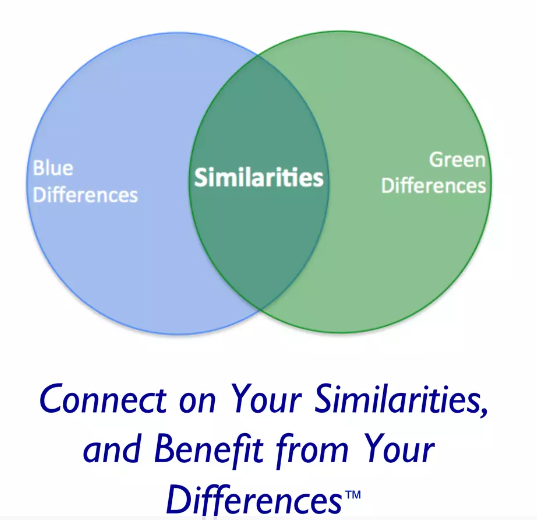 [image error]
[image error]
October 11, 2024
How AI Can Support KM Processes

Artificial Intelligence (AI) can augment human knowledge work by automating time-consuming and difficult tasks. This allows people to focus on higher-value activities. AI becomes a collaborative partner in managing an organization’s knowledge.
To demonstrate this, I asked ChatGPT, Copilot, Claude, Gemini, and Pi the question: “How can AI support knowledge management?” This article includes content curated from the replies received from these tools.
24 Ways AI Can Support Knowledge ManagementAI has an almost unlimited number of uses in support of knowledge management. Here are two dozen examples for general knowledge management.
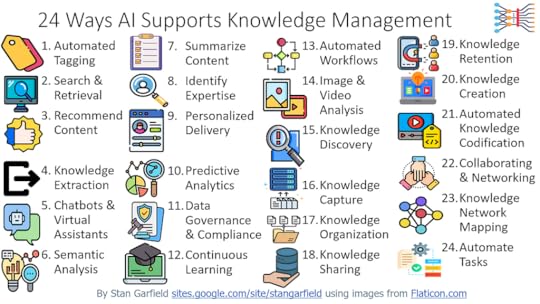 Infographic Number 57 in Knowledge Nuggets: 100 KM InfographicsAutomated Content Categorization and Tagging: AI can automatically categorize and tag documents, articles, and other content based on their content, making it easier to organize and retrieve relevant information.Search and Retrieval: Advanced search algorithms powered by AI can enable more accurate and efficient information retrieval. Natural language processing (NLP) techniques allow users to search using natural language queries, making it easier to find specific information within a knowledge repository.Content Recommendation: AI can analyze user preferences and past interactions to recommend relevant articles, documents, or resources, thus improving knowledge discovery and dissemination.Knowledge Extraction: AI can analyze unstructured data sources like text documents, emails, and even audio recordings to extract valuable insights and knowledge. This can be particularly useful in identifying trends, sentiment analysis, and distilling information from large datasets.Chatbots and Virtual Assistants: AI-powered chatbots or virtual assistants can provide instant responses to common queries, guide users through knowledge repositories, and offer real-time support for information retrieval.Semantic Analysis: AI can analyze the semantic meaning of content, enabling it to understand relationships between concepts and providing more accurate context-based search results.Content Summary: AI can automatically generate concise summaries of lengthy documents, helping users quickly grasp the key points without reading the entire content.Collaboration and Expertise Location: AI tools can identify subject matter experts within an organization based on their contributions, interactions, and expertise. This helps facilitate collaboration and knowledge sharing.Content Personalization: AI can tailor content recommendations based on individual user roles, preferences, and history, ensuring that users receive information most relevant to their needs.Predictive Analytics: AI can analyze historical data to predict future trends, behaviors, and challenges. This can guide decision-making and knowledge management strategies.Data Governance and Compliance: AI can help ensure that knowledge management practices adhere to data governance and compliance standards by automatically identifying sensitive or confidential information.Continuous Learning and Improvement: AI can learn from user interactions and feedback, continuously improving its ability to provide relevant and accurate knowledge management support.Automated Workflows: AI can streamline processes by automating routine tasks such as content updates, version control, and approvals in knowledge management systems.Image and Video Analysis: AI techniques can be applied to images and videos, allowing for better organization and retrieval of multimedia knowledge assets.Knowledge Discovery: AI can analyze large volumes of data to identify patterns, trends, and insights that would be difficult for humans to uncover. This allows organizations to make better decisions and identify new opportunities.Knowledge Capture: AI can listen to conversations, read documents, and analyze interactions to automatically extract important information. This helps capture tribal knowledge that often walks out the door when employees leave.Knowledge Organization: AI can categorize and tag information, building knowledge taxonomies and ontologies. This makes it easier for people to find relevant information when needed.Knowledge Sharing: Chatbots and virtual assistants powered by AI can provide quick access to information for employees. Additionally, recommendation engines can suggest relevant content to individuals.Knowledge Retention: By continually interacting with humans, AI systems can learn and retain organizational knowledge over time. This institutional memory preserves knowledge even as employees come and go.Knowledge Creation: AI can combine disparate pieces of information to generate new insights and ideas. This catalyzes innovation and helps create new knowledge.Knowledge Codification: AI can be used to automate the process of codifying knowledge from a variety of sources, such as documents, databases, repositories, and other forms of captured information.Collaborating and Networking: AI can be used to facilitate collaboration and networking among knowledge workers. This can be done by using chatbots and virtual assistants to answer questions, by using social media to connect with experts, and by using machine learning to identify and recommend potential collaborators.Knowledge Network Mapping: AI can create a real-time knowledge network. An organization’s entire knowledge network can be mapped out in real time. Employees can quickly identify subject matter experts. The platform learns with every interaction, and the knowledge network becomes more robust.Task Automation: AI can automate data entry, document processing, customer support, reporting, scheduling, sending reminders, transcribing meeting notes, and other repetitive tasks.12 KM Processes AI Can Help Streamline
Infographic Number 57 in Knowledge Nuggets: 100 KM InfographicsAutomated Content Categorization and Tagging: AI can automatically categorize and tag documents, articles, and other content based on their content, making it easier to organize and retrieve relevant information.Search and Retrieval: Advanced search algorithms powered by AI can enable more accurate and efficient information retrieval. Natural language processing (NLP) techniques allow users to search using natural language queries, making it easier to find specific information within a knowledge repository.Content Recommendation: AI can analyze user preferences and past interactions to recommend relevant articles, documents, or resources, thus improving knowledge discovery and dissemination.Knowledge Extraction: AI can analyze unstructured data sources like text documents, emails, and even audio recordings to extract valuable insights and knowledge. This can be particularly useful in identifying trends, sentiment analysis, and distilling information from large datasets.Chatbots and Virtual Assistants: AI-powered chatbots or virtual assistants can provide instant responses to common queries, guide users through knowledge repositories, and offer real-time support for information retrieval.Semantic Analysis: AI can analyze the semantic meaning of content, enabling it to understand relationships between concepts and providing more accurate context-based search results.Content Summary: AI can automatically generate concise summaries of lengthy documents, helping users quickly grasp the key points without reading the entire content.Collaboration and Expertise Location: AI tools can identify subject matter experts within an organization based on their contributions, interactions, and expertise. This helps facilitate collaboration and knowledge sharing.Content Personalization: AI can tailor content recommendations based on individual user roles, preferences, and history, ensuring that users receive information most relevant to their needs.Predictive Analytics: AI can analyze historical data to predict future trends, behaviors, and challenges. This can guide decision-making and knowledge management strategies.Data Governance and Compliance: AI can help ensure that knowledge management practices adhere to data governance and compliance standards by automatically identifying sensitive or confidential information.Continuous Learning and Improvement: AI can learn from user interactions and feedback, continuously improving its ability to provide relevant and accurate knowledge management support.Automated Workflows: AI can streamline processes by automating routine tasks such as content updates, version control, and approvals in knowledge management systems.Image and Video Analysis: AI techniques can be applied to images and videos, allowing for better organization and retrieval of multimedia knowledge assets.Knowledge Discovery: AI can analyze large volumes of data to identify patterns, trends, and insights that would be difficult for humans to uncover. This allows organizations to make better decisions and identify new opportunities.Knowledge Capture: AI can listen to conversations, read documents, and analyze interactions to automatically extract important information. This helps capture tribal knowledge that often walks out the door when employees leave.Knowledge Organization: AI can categorize and tag information, building knowledge taxonomies and ontologies. This makes it easier for people to find relevant information when needed.Knowledge Sharing: Chatbots and virtual assistants powered by AI can provide quick access to information for employees. Additionally, recommendation engines can suggest relevant content to individuals.Knowledge Retention: By continually interacting with humans, AI systems can learn and retain organizational knowledge over time. This institutional memory preserves knowledge even as employees come and go.Knowledge Creation: AI can combine disparate pieces of information to generate new insights and ideas. This catalyzes innovation and helps create new knowledge.Knowledge Codification: AI can be used to automate the process of codifying knowledge from a variety of sources, such as documents, databases, repositories, and other forms of captured information.Collaborating and Networking: AI can be used to facilitate collaboration and networking among knowledge workers. This can be done by using chatbots and virtual assistants to answer questions, by using social media to connect with experts, and by using machine learning to identify and recommend potential collaborators.Knowledge Network Mapping: AI can create a real-time knowledge network. An organization’s entire knowledge network can be mapped out in real time. Employees can quickly identify subject matter experts. The platform learns with every interaction, and the knowledge network becomes more robust.Task Automation: AI can automate data entry, document processing, customer support, reporting, scheduling, sending reminders, transcribing meeting notes, and other repetitive tasks.12 KM Processes AI Can Help StreamlineAI can be used to enhance and support many knowledge management processes. Following are details on how this can be done for a dozen of them.
1. Surveys
Question Generation: AI can be used to generate survey questions based on specific topics, themes, and objectives.Chatbot Surveys: AI can be integrated into a chatbot platform to create conversational surveys that allow users to answer questions in a more natural and engaging manner.Text Classification: AI can be used to classify and categorize survey responses based on the sentiment expressed, the topics discussed, and other criteria.Data Analysis: AI can be used to analyze survey data and generate insights and recommendations based on the results.2. Communities
Question Answering: AI can respond to queries posted in threaded discussions by searching for previous answers and looking outside the community.Thread Summaries: AI can summarize threads to extract the key points from lengthy discussions.Call Summaries: AI can listen to and summarize community calls for the benefit of those who attended and those who were unable to do so.Mentoring: AI can act as a mentor to community members by advising them based on past discussions, calls, and submitted content.Thread Tagging: AI can tag threads in a consistent manner and add tags not supplied by those posting.Aggregation: AI can monitor activity in multiple communities and aggregate the important content so that it is not missed.Recruitment: AI can find potential members and suggest that they join relevant communities.Moderation: AI can monitor discussions looking for inappropriate language, inflammatory exchanges, and confidential information that should not be discussed, and act promptly to provide the desired remedy.Discovery: AI can find and share relevant external content that members might not otherwise see.3. Training
Content Generation: AI can be used to generate training materials, such as lesson plans, modules, and presentations, based on specific topics, objectives, and formats.Virtual Instructor: AI can be integrated into a virtual learning platform to provide personalized and interactive training experiences for learners.Question Answering: AI can be used to answer questions related to the training material, providing learners with quick and accurate information and support.Assessment Generation: AI can be used to generate assessments and quizzes, ensuring that learners have a solid understanding of the material covered in the training.Adaptive Learning: AI can be used to provide tailored training experiences based on the learner’s progress, preferences, and needs.Content Generation: AI can be used to generate technical documents, such as user manuals, product guides, and reference materials, based on specific topics, formats, and styles.Question Answering: AI can be integrated into a customer support platform to provide quick and accurate answers to user queries related to the documentation.Text Summarization: AI can be used to summarize large and complex documents into more concise and easily understandable formats.Knowledge Management: AI can be used to manage and categorize large amounts of documentation, making it easier to find, access, and update information.Automatic Translation: AI can be used to translate documents into multiple languages, making it easier for users to access information in their preferred language.Chatbots: AI can be integrated into a chatbot platform to provide automated and conversational customer service, sales, and support experiences.Virtual Personal Assistant: AI can be used to develop a virtual personal assistant that can assist individuals with scheduling, reminders, and other communication-related tasks.Language Translation: AI can be used to translate messages and communications into multiple languages, improving the accessibility and effectiveness of communication efforts.Text Summarization: AI can be used to summarize large and complex communications, such as emails, reports, and presentations, into more concise and easily understandable formats.Sentiment Analysis: AI can be used to analyze the sentiment expressed in communications, providing insights into the tone, mood, and emotion behind the messages.6. User Assistance and Knowledge Help Desk
Chatbots: AI can be integrated into a chatbot platform to provide automated and conversational customer service experiences, handling frequently asked questions and basic support requests.Question Answering: AI can be used to answer technical and product-related questions, reducing wait times and improving the efficiency of the support process.Knowledge Management: AI can be used to manage and categorize large amounts of support-related information, making it easier for agents to access and share information.Sentiment Analysis: AI can be used to analyze the sentiment expressed in customer interactions, providing insights into customer satisfaction and helping agents tailor their support responses accordingly.Automatic Ticket Routing: AI can be used to route customer requests to the appropriate support agents automatically, ensuring that the requests are handled by the most qualified and available resources.7. Knowledge Creation, Invention, and Innovation
Idea Generation: AI can be used to generate new ideas and concepts, which can be used as a starting point for innovation projects.Prototyping: AI can be used to generate prototypes of new products, services, or processes, which can be used to validate and refine ideas.Concept Validation: AI can be used to analyze and validate new concepts, such as market trends, customer needs, and potential solutions.Problem Solving: AI can be used to solve complex problems, such as optimizing business processes, improving customer experiences, and reducing costs.Decision Making: AI can be used to analyze data and provide recommendations, which can be used to support decision-making processes and inform strategic initiatives.Content Generation: AI can be used to generate high-quality written content, such as articles, blog posts, and product descriptions. This can be useful for creating and managing content resources.Content Summarization: AI can be used to summarize long documents or articles, making it easier for users to access important information and manage relevant content.Content Categorization: AI can be trained to categorize content based on specific attributes, such as topic, genre, or audience. This can be useful for managing and organizing content resources.Conversational AI: AI can be integrated into conversational interfaces, such as chatbots, to manage content resources by responding to customer inquiries and providing accurate answers.Content Analytics: AI can be used to analyze content and provide insights on how to improve its relevance and engagement, which can be useful for managing and optimizing content resources.9. Classification and Taxonomy
Taxonomy Generation: AI can be used to generate taxonomies based on specific criteria, such as content topics, audience, or business objectives. This can be useful for organizing and categorizing content resources.Taxonomy Categorization: AI can be trained to categorize content based on specific taxonomies, making it easier for users to access and find relevant information.Taxonomy Summarization: AI can be used to summarize long documents or articles and categorize them based on specific taxonomies, making it easier for users to access important information and find relevant content.Taxonomy Mapping: AI can be used to map existing taxonomies to new taxonomies, ensuring that content resources are consistent and well organized.Taxonomy Analytics: AI can be used to analyze taxonomies and provide insights on how to improve their structure and relevance, which can be useful for optimizing taxonomy resources.Report Generation: AI can be used to generate reports based on specific criteria, such as data sources, audience, or business objectives. This can be useful for producing accurate, up-to-date, and relevant information for stakeholders.Data Summarization: AI can be used to summarize large datasets, making it easier for users to access important information and understand key insights.Data Visualization: AI can be used to generate visual representations of data, such as charts and graphs, which can be useful for communicating complex information in an accessible and understandable format.Data Analytics: AI can be used to analyze data and provide insights on how to improve processes, reduce costs, and create more value for stakeholders.Automated Reporting: AI can be integrated into automated reporting systems, allowing organizations to access up-to-date metrics and insights without the need for manual intervention.Network Visualization: AI can be used to generate visual representations of social networks, such as graphs and diagrams, which can help users understand the relationships and connections between individuals and organizations.Network Analysis: AI can be used to analyze social networks and provide insights on how to improve relationships, identify key influencers, and create more value for stakeholders.12. Storytelling, Business Narrative, and Anecdote Circles
Story Generation: AI can be used to generate stories, including fictional and non-fictional narratives, which can be useful for engaging and inspiring audiences.Narrative Development: AI can be used to develop business narratives, such as company histories, customer case studies, and product demos, which can be useful for building brand awareness and demonstrating the value of products and services.Content Generation: AI can be used to generate written, visual, and audio content for storytelling and business narrative, including blogs, articles, infographics, and podcasts, which can be useful for engaging and educating audiences.Anecdote Generation: AI can be used to generate anecdotes, which can be used to illustrate points and engage audiences in discussions and activities.Anecdote Sharing: AI can be used to facilitate the sharing of anecdotes, including between individuals and teams, which can be useful for improving collaboration and knowledge sharing.Additional Resources for Learning About AITo learn more about the impact of AI on knowledge management as well as special libraries, museums, and archives, please explore some of these resources from Lucidea and across the web:
KM Component 50 — Artificial IntelligenceProfiles in Knowledge Part 1: Analytics, AI, Search, Taxonomy, & TechnologyKnowledge Management Thought Leaders Part 21 — Susan FeldmanKnowledge Management Thought Leaders Part 76 — Seth EarleyGenerative AI: Relevance to LibrariansNew AI Tools to Discover in 2024Ways I Have Been Using Generative AISummer Reading Recommendations: Generative AI and the Next Generation of LibrariesKeeping up with AIWhat Does AI Mean to Museums?The Application of AI for Museum Collections OnlineAI Application to Museum ExhibitionsHow Do Generative AI Systems Work?SIKM Leaders Community DiscussionsKMGN’s KM Artificial Intelligence Course[image error]October 4, 2024
Knowledge Management Thought Leader 88: Gary Klein

Gary Klein is President of ShadowBox LLC. He pioneered the Naturalistic Decision Making (NDM) movement and helped initiate the new discipline of macrocognition.
Gary developed multiple cognitive methods and models. These include the Data/Frame Theory of sense-making, the Management by Discovery model of planning in complex settings, the Triple Path Model of insight, the Pre-Mortem method of risk assessment, Cognitive Task Analysis for uncovering the tacit knowledge that goes into decision making, and the ShadowBox Training approach for cognitive skills. He also developed the Recognition-Primed Decision (RPD) model to describe how people actually make decisions in natural settings, the Knowledge Audit for doing cognitive task analysis, the Critical Decision Method (CDM), and the Artificial Intelligence Quotient (AIQ).

For more about Gary, see Profiles in Knowledge. He created the following content which I have curated to represent his contributions to the field.
Books by Gary KleinTitles by Gary Klein include Seeing What Others Don’t: The Remarkable Ways We Gain Insights, Sources of Power: How People Make Decisions, and Streetlights and Shadows: Searching for the Keys to Adaptive Decision Making.
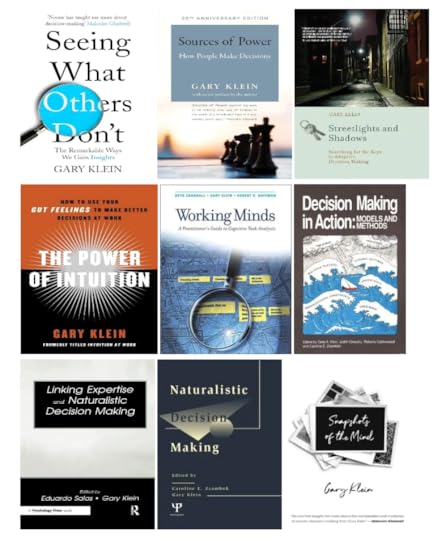 A Data-Frame Theory of Sensemaking
A Data-Frame Theory of SensemakingBelow is a diagram of Gary Klein’s Data-Frame Theory of Sensemaking.
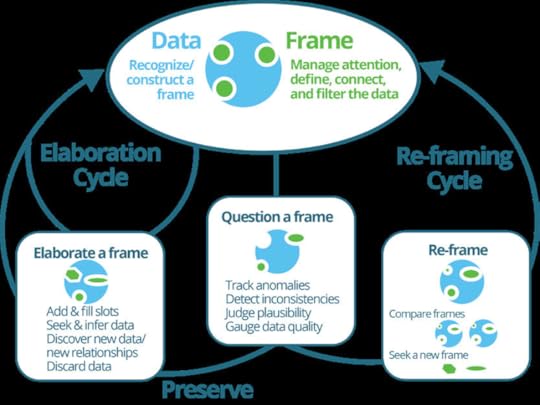 Spotting Exaggerated Claims for AI Superiority Over ExpertsMany artificial intelligence developers are prone to dismiss human expertise or misunderstand it.Artificial intelligence/machine learning proponents tend to overstate the strengths of machines over humans.AI/ML projects can be useful for augmenting human expertise.Background: Machine Learning for treating cardiac problems in the emergency department (ED)
Spotting Exaggerated Claims for AI Superiority Over ExpertsMany artificial intelligence developers are prone to dismiss human expertise or misunderstand it.Artificial intelligence/machine learning proponents tend to overstate the strengths of machines over humans.AI/ML projects can be useful for augmenting human expertise.Background: Machine Learning for treating cardiac problems in the emergency department (ED)Tips for Assessing AI/ML Demonstrations
First, pay attention to a learning confound. The ML model was designed to learn from the data. But the physicians never got any chance to learn. This doesn’t seem like a fair comparison. ED physicians actually don’t get very much feedback on the patients they see that shift. Test results may not arrive until the next shift. Many patients aren’t diagnosed during their stay in the ED. They are released or admitted to the hospital and the ED physicians don’t learn what happened unless they take the effort to investigate afterwards — pretty unlikely. Physicians certainly don’t get a 30-day follow-up.
Second, don’t take “biases” at face value. In this study, the ED physicians were using the checklists and training and common knowledge they had, but they weren’t using the 16,405 variables that the ML algorithm had — variables the physicians were never shown. Of course the ED physicians were using available and representative information. These heuristics aren’t biases; they are generally useful. Without them the physicians would be helpless.
Third, look out for smuggled expertise. The ML algorithm used information from the electronic health record, and I suspect that a lot of this information reflected judgment calls based on the expertise of the staff. The ML algorithm was building on the expertise of ED physicians and staff, not substituting for it.
Fourth, don’t be cowed by big-data types of analysis. The ML algorithm grew to 16,405 variables. However, in predicting risk, the empirical optimum was 224 variables — still, a lot. Yet there was a plateau at only about 20 variables — not that many. Twenty variables seems well within the range for training ED physicians to be more accurate.
6 Questions to Size up Your Team’s DynamicsCognitive diversity matters to a team’s performance.Teams can try to appraise their own cognitive diversity with a rapid self-test.The primary value of this self-test is to gauge where people are aligned and why they may not be.Five dimensions that seem to matter in a workplace:
Dimension 1: Reactions to novel ideasDimension 2: General mindset or stance (contrarian, trend analyst, disruptor)Dimension 3: Knowledge and experienceDimension 4: Preference for working collaboratively or independentlyDimension 5: Tolerance for uncertaintySelf-Test for Cognitive Diversity
What is your emotional reaction when someone in a meeting makes the following statement:
“Now, this may sound strange to you, but …” (Are you curious or skeptical? This item relates to Dimension 1, reactions to novel ideas.)“We know from the past that in these situations …” (Are you curious or skeptical? This item relates to Dimension 2, the different mindsets and stances.)“I know this looks complicated, but here is what my research has shown …” (Are you relieved or dubious? This item also taps into Dimension 2, the different mindsets and stances.)“Let’s just get everyone around a table and hash this out.” (Are you enthusiastic or impatient? This item relates to Dimension 4, preference for working collaboratively vs independently.)“We’ve been studying this forever, let’s just take a position here and move on.” (Are you relieved or uncomfortable? This item relates to Dimension 5, tolerance for uncertainty.)When the team is just about to converge on a course of action, someone says, “But there’s another way to think about this …” (Are you curious or irritated? This item also relates to Dimension 5, the need for closure.)How Decision-Makers Can Handle UncertaintyUncertainty is the norm for decision-makers.Uncertainty can stem from missing information, ambiguity, unreliable data, or contextual complexity.For making decisions, analytical methods that work so well with clearly defined data elements become less useful in the face of uncertainty.What can decision-makers do?
Accept uncertainty as the norm.Don’t keep an open mind about what is going on.Don’t fall into the information-gathering trap.Don’t fall into the fixation trap.Look for anomalies.Engage in story-building.Develop flexible plans that do not depend on one specific set of circumstances but will work in various situations.Take action to reduce uncertainty.There are a few ways to strengthen your expertise.Wake up from rationalist fever dreams.[image error]


